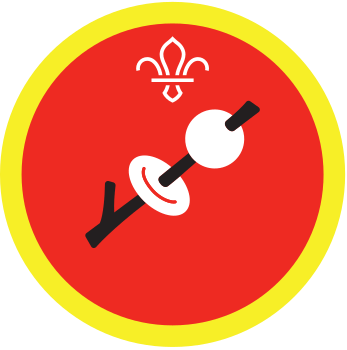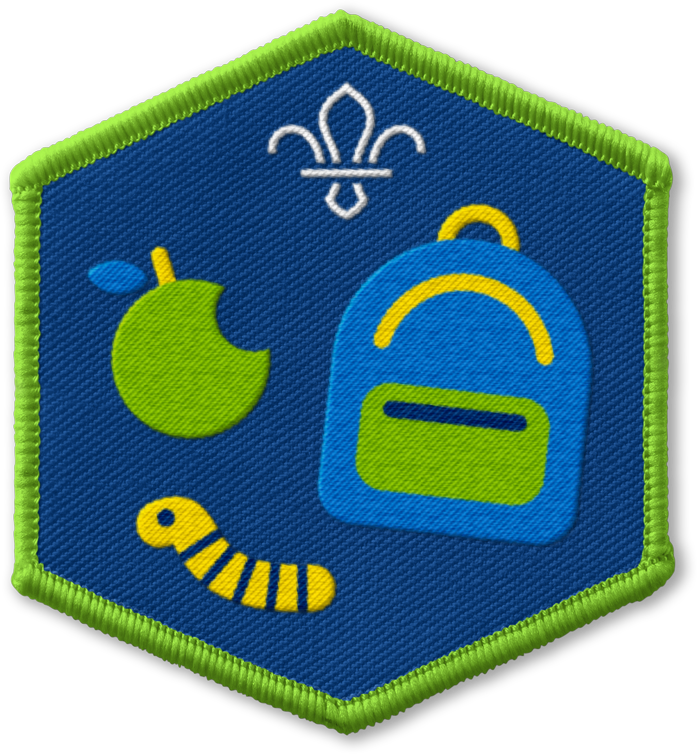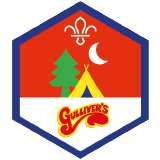Campfires
What to expect
Campfires can be a quiet moment with a handful of close friends, or they can be a well-planned event to entertain hundreds. They’re a fantastic safe space for the singers, the storytellers, the actors, and the chefs to practice their talents.
You can build a fire in lots of different shapes like stars, pyramids, towers and pits. Here’s some more information on fire styles and shapes that you could share with your group.
A campfire doesn’t care what uniform you wear – they bring everyone together, allowing Squirrels, Beavers, Cubs, Scouts, and Explorers to share stories, memories, songs and jokes together.
Even when a real fire isn’t an option, you can use torches, logs, and orange paper to create a glowing ‘fire’. It might not warm your hands, but it’ll give you the same warm feeling in your tummy.
Did you know?
- Every year between Christmas and New Year, two towns in the Netherlands compete to build the largest bonfire. The current record is 8,695 cubic metres, the largest recorded in the world!
- The first marshmallows came from a plant called Athlea officinalis. The ancient Greeks and Romans used it as a medicine, but now the root is combined with eggs and sugar made it into a foamy treat.
- If you lit a campfire in space, the flames would be circle shaped because of the lack of gravity.
- It’s not uncommon for a campfire to get as hot as 500 degrees Celsius - that’s hot enough to melt some metals, such as lead.
Our campfire-related activities
Learn how to build and light a campfire, then sing campfire songs, to give everyone a warm welcome to a Scouts tradition.
Collect and sort wood, then learn how to safely build and light a fire.
Discuss and build a safe campfire in this practical activity.
Scout out some campfire science to create some worthy of the hall of flame!
Safely use fire to toast fluffy marshmallows, with friends.
Safety
- Outdoor activities
You must have permission to use the location. Always check the weather forecast, and inform parents and carers of any change in venue.
- Fires and stoves
Make sure anyone using fires and stoves is doing so safely. Check that the equipment and area are suitable and have plenty of ventilation. Follow the gas safety guidance. Have a safe way to extinguish the fire in an emergency.
- Food
Remember to check for allergies, eating problems, fasting or dietary requirements and adjust the recipe as needed. Make sure you’ve suitable areas for storing and preparing food and avoid cross contamination of different foods. Take a look at our guidance on food safety and hygiene.
Guidance
Reflection
Campfires are a great chance to value the outdoors. What can you see, hear, taste, feel, and smell? How would your campfire be different if it were a different time of day? Did you enjoy being outside? Did your campfire help you stop and notice the natural world around you?
Campfires also help us to build meaningful friendships. What have you shared with your friends around the campfire (for example, marshmallows, stories, memories)? Did you meet any new friends around the campfire? Was it easy to talk to people? Did you talk about things you don’t usually talk about? Does sharing things like food or songs help you feel closer to your friends?
People could bring stories, skits, or songs with them. Young people can help light the fire (or light it themselves). Campfires can be a great opportunity for a Log Chew, or Pack or Troop Forum.
Campfires don’t have to be outdoors: you could create a ‘fire’ with torches, twigs and orange paper indoors.
All Scout activities should be inclusive and accessible.
People can coordinate their own campfire shows – they can lead the songs, skit, stories, and snacks. Encourage them to make this time their own so they get the most from the experience.





